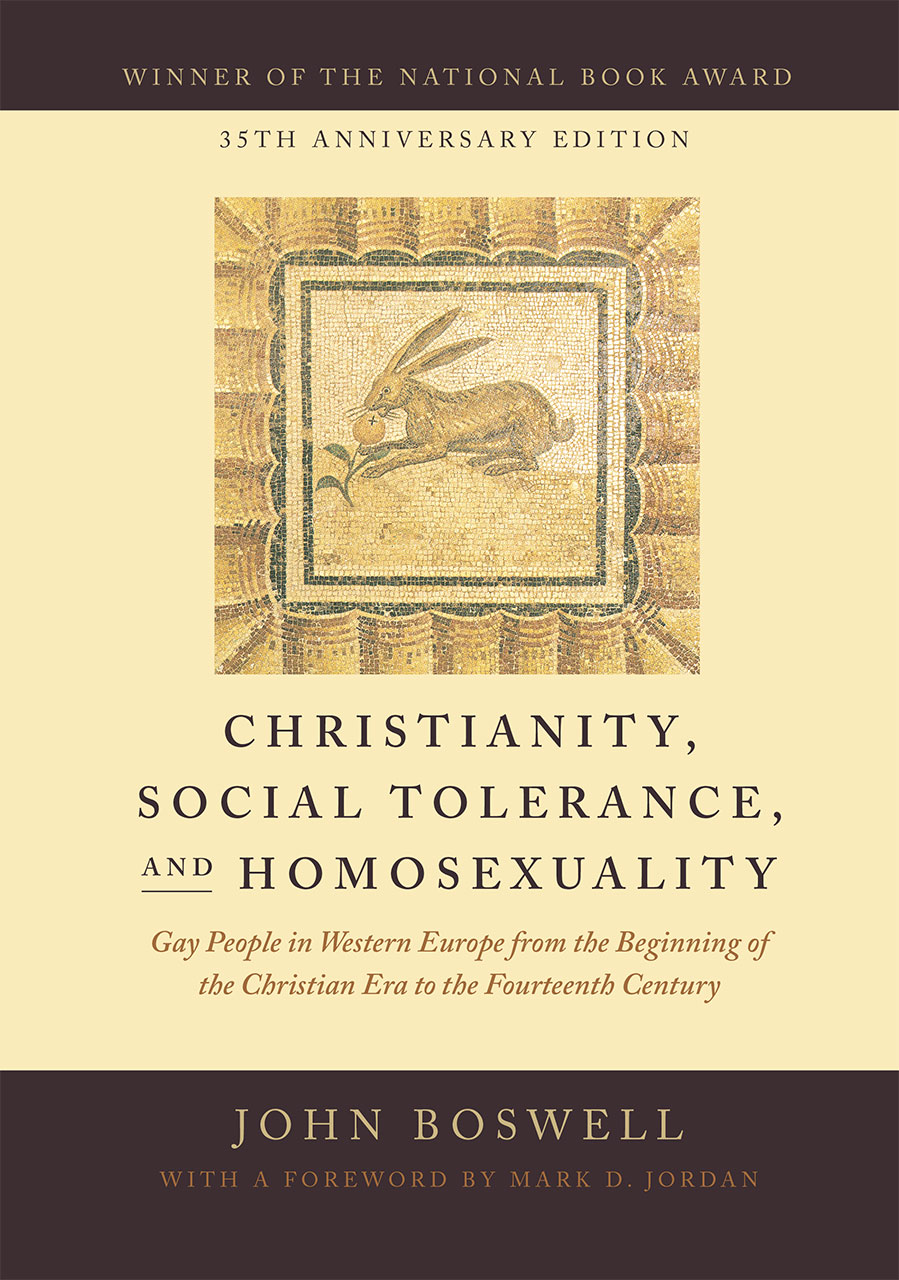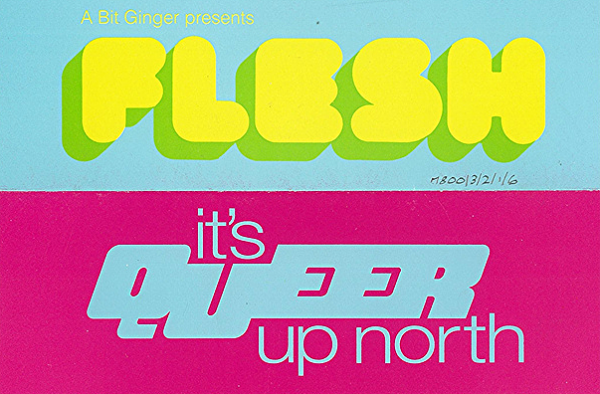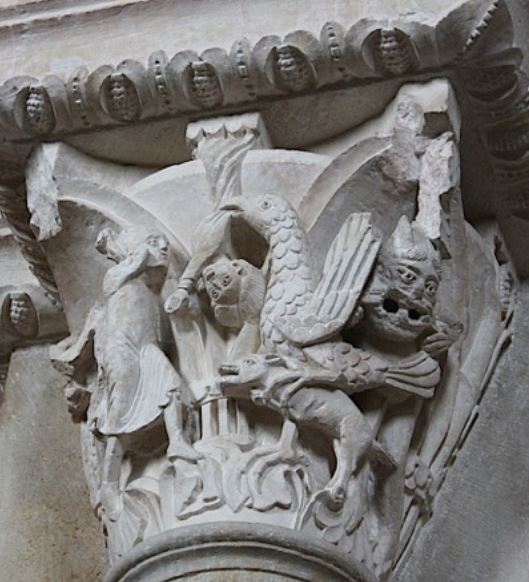I still remember the thrill when, as an undergraduate in Manchester in the early 1990s, I first encountered John Boswell’s Christianity, Social Tolerance, and Homosexuality (hereafter CSTH) in the university library. The very fact that a book existed on the topic of ‘gay people’ in the Middle Ages felt profoundly enabling. I didn’t read it from cover to cover; that came later, when I started my PhD. But at a time when I was personally grappling with my own identity as a gay man, it seemed vitally important that my place within a so-called ‘gay community’ be underpinned by a sense of history.

Subsequently I came to realise that Boswell’s positioning was somewhat different from my own. Admittedly, within the book itself, Boswell remains coy about his religious affiliations. The authorial stance is that of a historian sifting and weighing evidence, not of a gay Catholic seeking a place within the modern Church. Though schooled in Christian traditions, my own perspective is that of an atheist, which possibly gives me a distinctive (though arguably no less partisan) stake in these debates. Still, I appreciate the note of humility that Boswell sounds throughout. While making bold claims, for example, about the relative tolerance of the early medieval Church towards same-sex eroticism, he regularly acknowledges the provisional nature of his arguments, characterizing the study emphatically as an ‘essay.’
Recently, I’ve been exploring the British filmmaker and artist Derek Jarman‘s interest in medieval culture. Jarman apparently owned several copies of CSTH and drew on it frequently, notably when preparing his film of Marlowe’s Edward II. Despite being an avowed atheist himself, Jarman derived from Boswell a sense of sexual community and history across time.
A passage in Jarman’s memoir At Your Own Risk (1992) was directly inspired by his reading of Boswell’s book: ‘Its timelessness becomes the brotherhood; the brethren are lovers; they extend the “family.” I share that sexuality. It was then, is now and will be in the future. I like the idea that we are linked in orgasm with Alcuin, St Anselm or St Aeldred [Aelred of Rievaulx], all of whom loved men physically.’ The three names Jarman mentions here—all key figures in the medieval English church—were also enlisted by Boswell as representatives of the gay sensibility that, he argued, persisted in early medieval Christianity. The copy of CSTH on Jarman’s bookshelves at Prospect Cottage in Dungeness still retains the owner’s makeshift bookmarks highlighting relevant passages on this trio of churchmen.
Interestingly, however, Jarman prefaces these comments with a statement that turns against the very terminology Boswell used to ground his sense of history: ‘Looking at historical figures and wondering: were they gay? They may have had the same sexual preferences but “gay” is a late twentieth century concept.’ Here Jarman acknowledges the queer critiques of ‘gay’ history developing in academic circles in the 1990s, inspired especially by the work of Michel Foucault. The filmmaker evokes a brotherhood of men who love men physically, linked to each other and to us by a chain of orgasms. But he rejects the idea that a single term can encapsulate this shared sexuality.

During my undergraduate days I recall walking past a huge banner in the street advertising Jarman’s ‘Queer’ paintings, then being exhibited at Manchester City Art Gallery. A now legendary dance party ‘Flesh’—my first experience of queer nightlife—launched at the Haçienda nightclub in 1991, was promoted with political-sexual slogans such as ‘Queer as Fuck’ and ‘It’s Queer Up North’. I took from these statements a sense that, even as one might identify as gay, there were aspects of erotic life that the term ‘gay’ simply couldn’t capture. A lively debate had also recently opened up among my peers about the limitations as well as possibilities of gay community. ‘Gay’, said some, had increasingly come to represent privileged white urban homosexual men. Coming together under the banner of ‘queer’ was potentially more inclusive and subversive.
What a difference a decade makes! In CSTH Boswell had argued that the phrase ‘gay people’ was itself, at the time of the book’s publication in 1980, more clearly inclusive than ‘homosexual’. Notably, insofar as it describes ‘persons who are conscious of an erotic preference for their own gender,’ gay could refer to females as well as males, children as well as adults. And it potentially allowed readers to draw their own conclusions concerning the relative importance of love, affection, eroticism etc. in the lives of those so designated. We can only speculate about Boswell’s take on the now burgeoning field of queer theory, which was in its infancy at the time of his death in 1994. But it’s important to recognise that when Boswell referred, in CSTH, to his subjects as ‘gay’ he wasn’t working with the more restricted definitions that came to be associated with the word some ten to fifteen years later.

Finally, it’s worth stressing that, even as Boswell’s book has inspired heated debates about terminology and methodology, the devil is in the details. CSTH often gets cited as an example of an ‘essentialist’ approach to sexual history, but this hasn’t necessarily been accompanied by a deep or sustained engagement with the book’s contents. Many of the numerous sources cited in CSTH continue to pose significant challenges to scholars. In Seeing Sodomy in the Middle Ages, for instance, I analyse a twelfth-century sculpture apparently representing the rape of Ganymede by an eagle. This also happens to be the only image reproduced as one of the thirteen plates in CSTH that Boswell chose to discuss directly in the main body of his text. What’s striking about Boswell’s own brief treatment of the sculpture is the extent to which he keeps an open mind about its meaning: he’s seemingly alone among recent commentators in questioning whether the capital communicates a thoroughly negative statement about eroticism between males. The fact that Boswell was so ready to acknowledge the difficulties of interpretation helps explain the continuing appeal of CSTH several decades after publication. A little humility goes a long way in historical research.
 Robert Mills is Reader in Medieval Art at University College London. Author of Suspended Animation: Pain, Pleasure and Punishment in Medieval Culture (Reaktion, 2005) and Seeing Sodomy in the Middle Ages (University of Chicago Press, 2015), he also contributed the medieval section to A Gay History of Britain: Love and Sex Between Men Since the Middle Ages (Greenwood, 2007).
Robert Mills is Reader in Medieval Art at University College London. Author of Suspended Animation: Pain, Pleasure and Punishment in Medieval Culture (Reaktion, 2005) and Seeing Sodomy in the Middle Ages (University of Chicago Press, 2015), he also contributed the medieval section to A Gay History of Britain: Love and Sex Between Men Since the Middle Ages (Greenwood, 2007).

NOTCHES: (re)marks on the history of sexuality is licensed under a Creative Commons Attribution-NonCommercial-NoDerivatives 4.0 International License.
Based on a work at www.notchesblog.com.
For permission to publish any NOTCHES post in whole or in part please contact the editors at NotchesBlog@gmail.com




